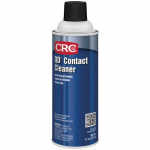What mental midget decided putting acid down a Bore was a good thing ? CLR , ISN'T for bore cleaning !.
IF any of you really want to clean a bore ,there are plenty of commercially available cleaners available . Granted some better than others .
Homemade solutions abound ,again some better than others . Anyone remember " HOW " black powder carbon is cleaned ?
Yep Boiling water and a detergent , Dawn ,Lemishine or tide . " IF " you've got a nasty barrel or just want it really cleaned ,purchase silicone tapered plugs ( I use Shercon and they are reusable ) even after firing in a Powder coat oven . Some will take 600 Deg. or more . Neoprene are also good for boiling water and soap .
OK ; So some of you are flipping out water down MY bore , oh Hell NO !. OK Marvel Mystery oil and carb cleaner or brake fluid Dot 4 type .even a 30% solution of acetone and 70% Marvel Mystery oil or Brake cleaner . Put a stopper in the muzzle ,hang it in a simple rack . Made mine out of 2x4's horizontal as well as vertical . A horizontal hole drilled through 2x4's up rights takes a 1/2" or 3/4" hardwood dowel ,which passes through rifles trigger guard ,thus suspending barrel off the ground by a few inches . A 1x4 across the back of those 2x4 up rights prevents rifles from spinning over center . It's NOT rocket science to clean carbon ,cleaning enzymes will do it FASTER HEATED . Afterwards simply patch with whatever snake oil You use . I use MC 7 bore cleaner or shooters choice . Keep em in the X ring
 https://www.caplugs.com/c/masking-parts
https://www.caplugs.com/c/masking-parts
High Temp Masking Supply .250" x .375" STP104 Silicone Rubber Plugs
HTMS-STP104-50
FREE Shipping in the USA!




